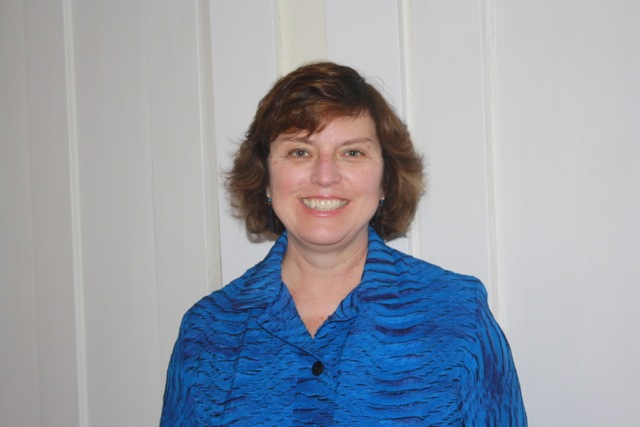Opinion: Jones Library: The “Elephante” In The Room. What Does Sustainability Mean?

Photo: flckr.com. Creative Commons

Carl Elephante (“elephante” means “elephant” in Italian) is an internationally renowned expert on sustainability issues. His famous quote declares, “The greenest building is the one that is already built.”
He continues: “We have a carbon burden that already exists in the built environment. As designers, we’re thinking about the future, we’re thinking about new buildings. The challenge is to not increase the current carbon burden, which means new buildings have to be much, much more energy-efficient, contributing much less carbon, ultimately contributing zero. But that does nothing to reduce the existing carbon burden. We’re not going to get to zero without drawing down from where we are today. To do that, we have to address the performance of existing buildings.”
The Jones Library Trustees were not initially interested in sustainability in their first set of schematic designs, which were rejected by Massachusetts Board of Library Commissioners (MBLC) just four months after the Jones was put on the grant waiting list.
The Trustees never considered re-using the 1993 addition, which represents about 40 percent of the current library space. The Trustees also never hired a space planner to analyze the possibility of increased space utilization within the existing structure.
The Jones did not apply for a Green Energy Initiative award of up to $450,000 on the original application and cannot do so now. The first plan was not LEED certified at even a minimal level.
Demolishing the entire 1993 addition of 17,800 sq. ft. will dump about 1,600 tons of steel, concrete, brick, and slate, materials with a high embodied carbon footprint. Embodied carbon is the carbon footprint of a particular material.
The most recent cost estimate shows that replacing this square footage will cost over $7.4 million plus the costs for the expansion for a total of $14.4 million for 35,800 sq. ft. of new construction.
After the MBLC insisted that the building be re-designed, the Jones decided to begin exploring sustainability issues and has recently embraced the idea. The members of the Jones’ Trustees Sustainability Committee began meeting in October, 2019.
Members include Chair Lee Jennings (UMass professor in Landscape Architecture & Regional Planning), Sara Draper (Hampshire College Director of Educational Programs and Outreach for the R.W. Kern Center), Todd Holland (Senior Engineer at Tighe and Bond), and Chris Riddle (retired co-founder of Kuhn Riddle Architects).
The Sustainability Committee has engaged in a $57,050 contract with Feingold Alexander Architects (FAA) to analyze how the project might be designed for the least amount of embodied carbon, including extra energy conservation measures, a cross-laminated timber (CLT) frame and perhaps be net-zero ready. Let’s note that the Jones project does not fall under the Town’s existing net-zero energy bylaw. Renovations and additions are supposedly not included in the bylaw, only new buildings and the Trustees have repeatedly said that the by-law doesn’t apply to them.
Committee member Sara Draper stated in a recent presentation that we didn’t need to follow Carl Elephante’s advice “unless it’s a library when you have to build it anyway.” Why is the library excluded from his world famous declaration?
Trustee Alex Levebvre commented that the Jones can be the “model of sustainability” for the Town, and the project will provide Amherst with “prestige” by joining three unique sustainable buildings in Amherst — the Hitchcock Center, The RW Kern Center at Hampshire College, and Crotty Hall at UMass. When is “prestige” a rationale in a Town budget?
Well, the “elephant” still galumphs! What ARE we losing with such destruction?
Why are the Trustees ignoring Elephante?
Details
Did the Sustainability Committee help create a more energy-efficient design for the expensive project? Yes.
Did the committee provide clarity on the cost of destroying the 1993 addition? No.
At the presentation of the new sustainable schematics, Riddle asked how the committee could answer the public’s question concerning “What will the Town get from destroying a perfectly good building?” (7/2/20) President Austin Sarat retorted, “We can’t say it’s a perfectly good building. We can’t give that impression.”
Jim Alexander of FAA also asserted that there is no way to accurately figure out the embodied carbon in the 1993 section because there are too many different kinds of materials and therefore it would be too complicated to figure out the embodied carbon and landfill costs. He also added that this number would be “irrelevant… You need to look at what you are getting in the new building.”
The Schematic Re-Design
The redesign of the project will bring down the Energy Usage Intensity (EUI) from 73.2 in the existing building to 34.4. This number could be brought down further with extra energy conservation measures and a CLT structure.
There is little clarity about how these extra expenditures of over $650,000 could fit into the current $35.8 million budget for the project (not including debt service) and what features in the current design plans might be adjusted or sacrificed in order to incorporate these features. Fundraising, grants, and rebates for such elements are also unknown at this time.
Terry S. Johnson is a retired Amherst teacher, blossoming poet, and a lifelong student of art, architecture, history, and languages.
